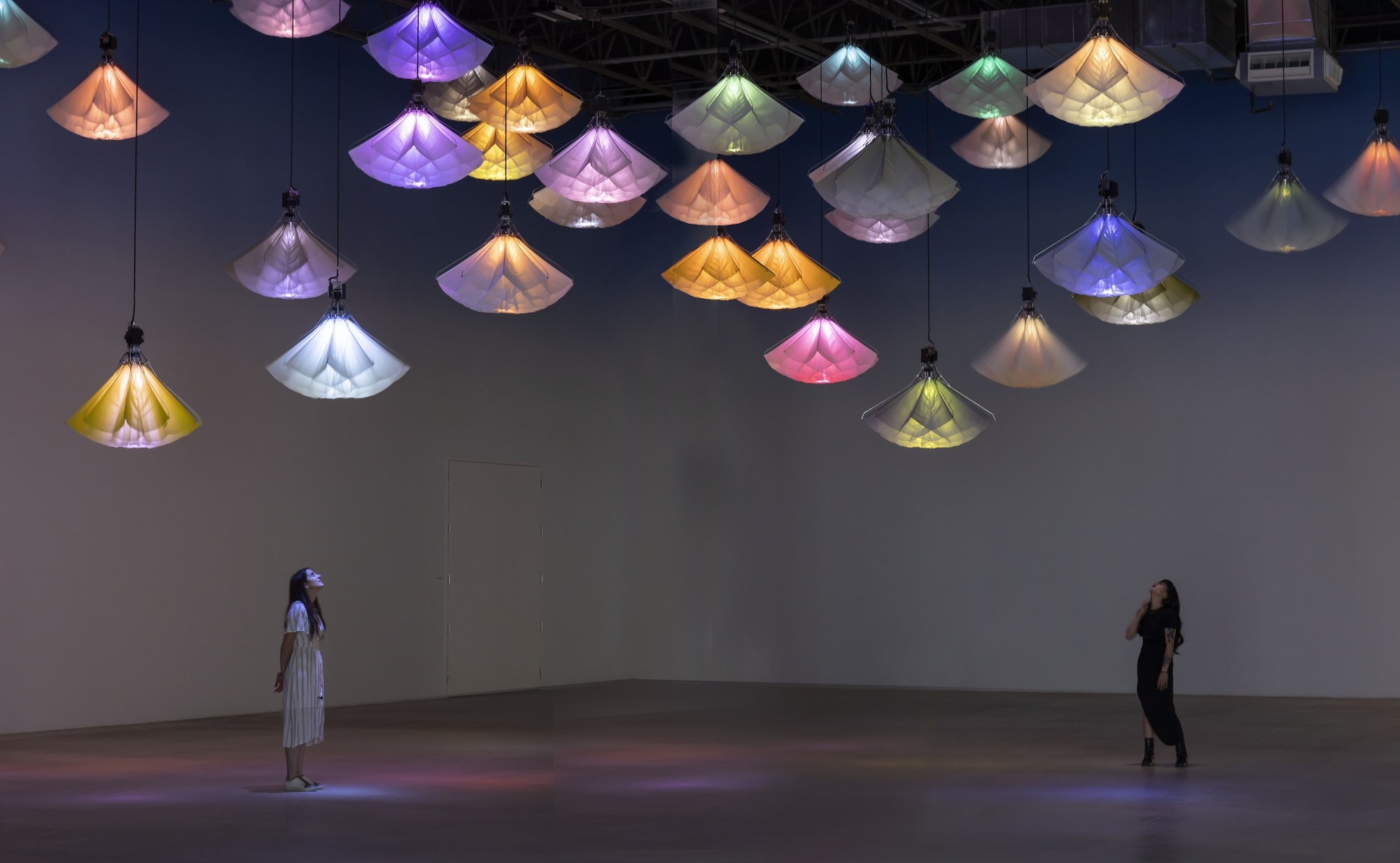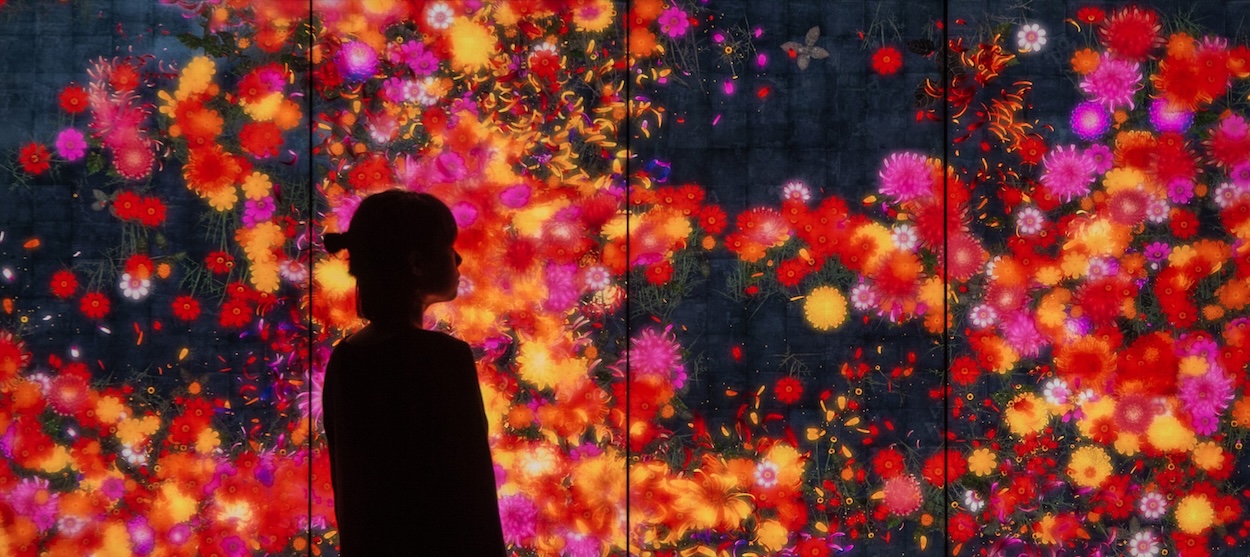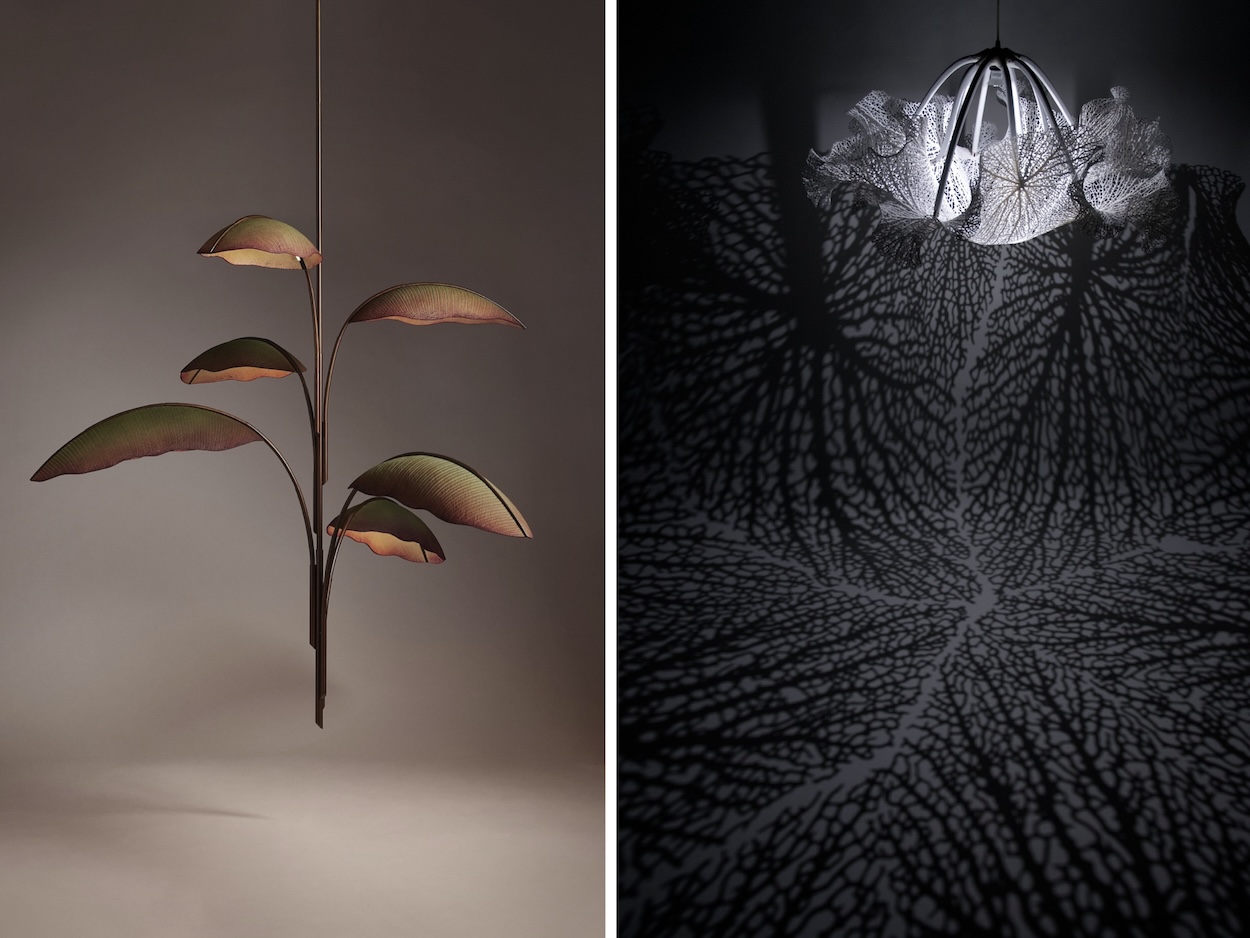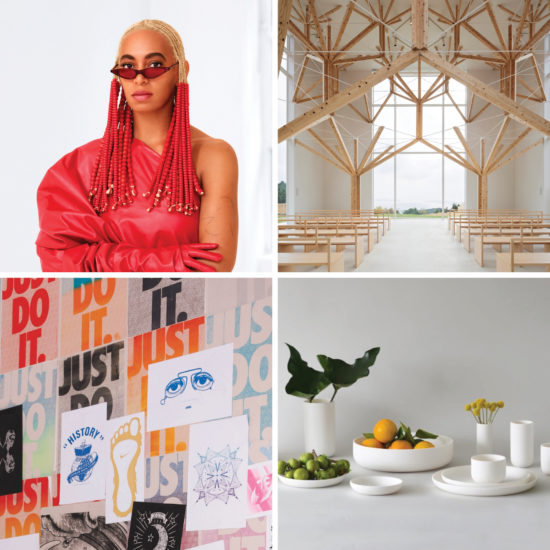The late biologist Edward O. Wilson theorized that as humans have evolved as a species, they’ve been intricately intertwined with nature. He argued this in his career-defining 1984 opus Biophilia, defining the titular term as “the urge to affiliate with other forms of life.” As technology has encroached upon every aspect of our lives and cities grow increasingly dense, naturalists have embraced Wilson’s hypothesis. For city dwellers averse to touching grass or embracing cottagecore, there are many ways to connect with nature through the lens of art, design, and architecture.
That forms the crux of “Biophilia: Nature Reimagined,” an exhibition opening this weekend at the Denver Art Museum that explores how the human spirit is interwoven with nature. Perhaps it becomes clear upon experiencing an adrenaline rush under Drift’s interactive Meadow, a kinetic fantasia of suspended flowers mimicking the biological behavior of nyctinasty—the rhythmic movement of certain plants that bloom in the daytime and close their petals at night. As visitors wander through, they act as sunlight proxies, triggering motion sensors that cause the petals to react and change color. A similar effect unfolds inside Nervous System’s Floraform Chandelier, a ruffled 3D-printed luminaire developed with generative algorithms that envelope watchers in a simulated environment of artificially grown plant forms.
Other pieces convey the calming effect of flora as a design muse—take Pelle’s tropical Nana Lure Chandelier, Andrés Reisinger’s petal-clad Hortensia Armchair, or Nacho Carbonell’s metal mesh Concrete Tree. They “aren’t meant as a substitute for nature-based experiences,” Darrin Alfred, the museum’s curator of architecture and design, tells Surface. Instead, they’re meant to prompt reflection on how the outdoors fosters spiritual wellbeing. The technical prowess on view might not be a walk in the park, but it may evoke the same emotional response as one.



